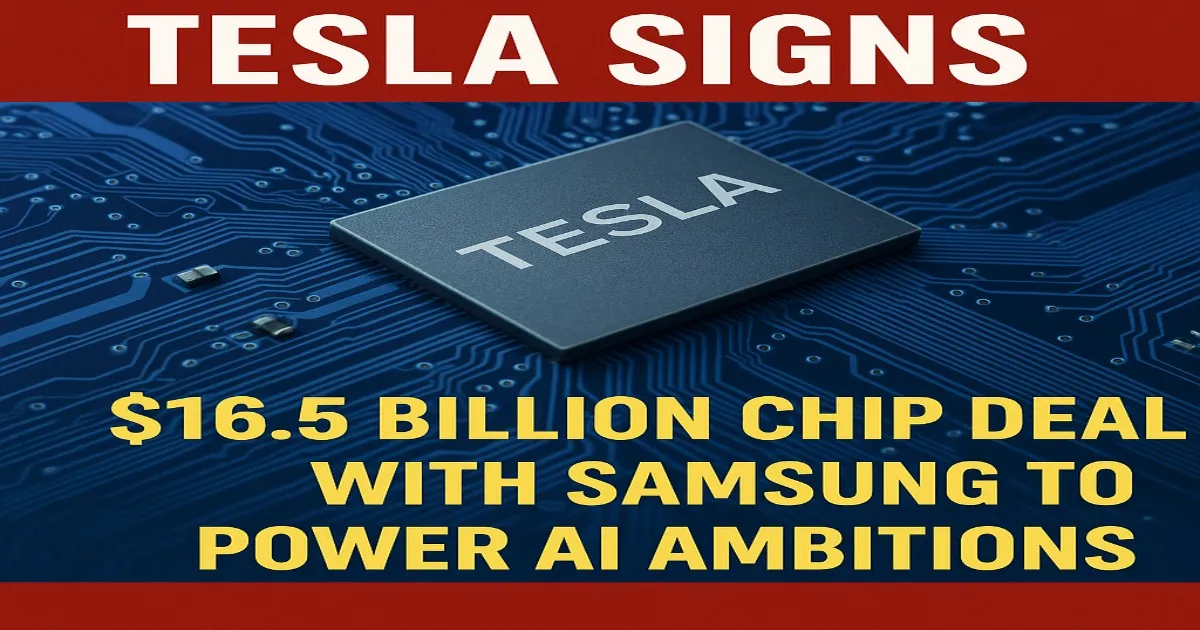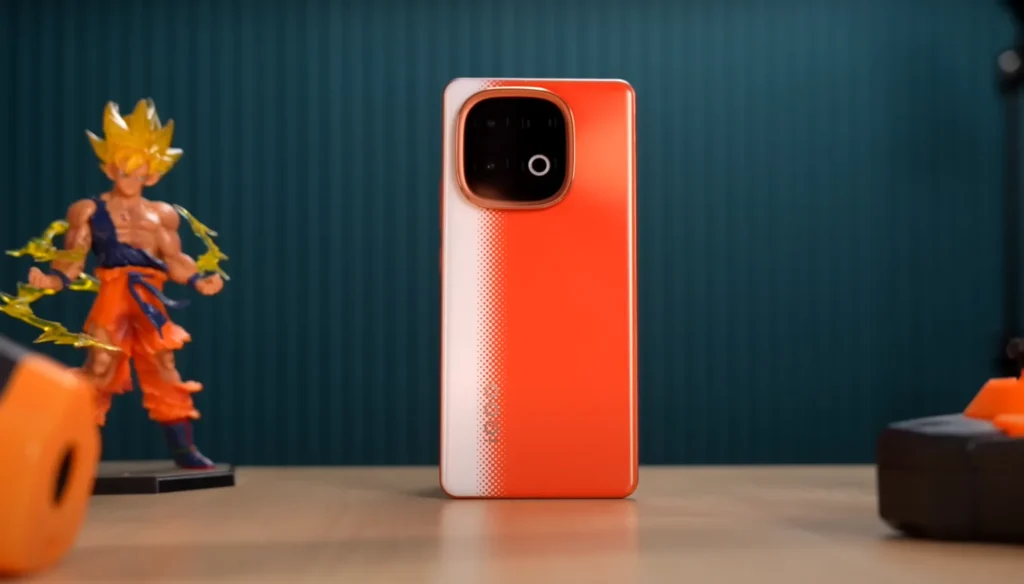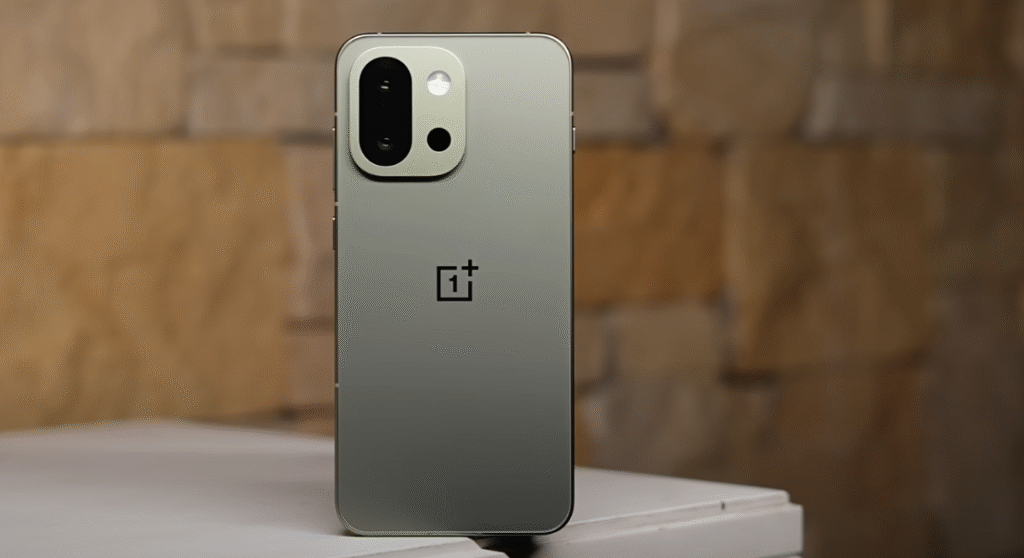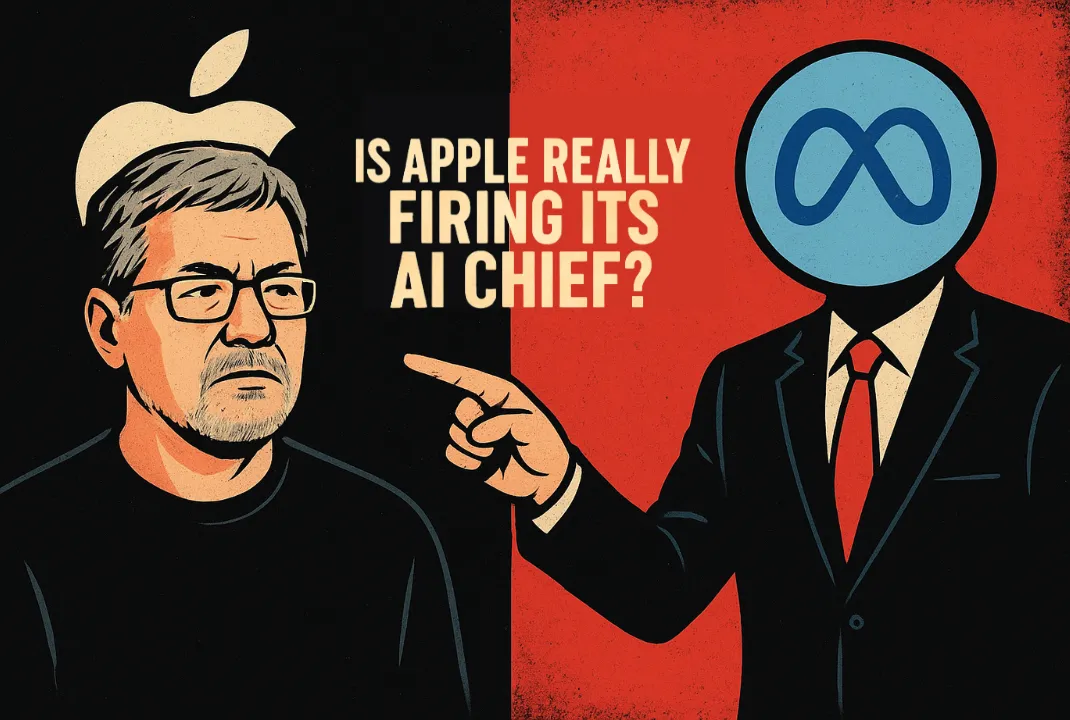In a move that could redefine both the EV world and American chip‑making, Tesla’s pact with Samsung now famously confirmed as the Tesla Samsung chip deal landed today July 28, 2025: a staggering $16.5 billion agreement for Samsung to build Tesla’s AI6 inference chips in its Taylor, Texas facility. This agreement, which expires in 2033, is rumored to be just the beginning, as Elon Musk has stated that the actual output will probably be “many times higher.
What is the Tesla AI6 chip?
Ever wondered what’s powering Tesla’s next leap? The Tesla AI6 chip is a custom inference silicon generation Tesla plans to deploy across vehicles (Full Self‑Driving), in its Optimus humanoid robot, and within upcoming Dojo AI servers. Tesla already uses its AI4 chip built by Samsung, and AI5 engineered by Tesla but made at TSMC arrives next. But AI6? That will be located in Samsung’s Texas manufacturing plant, which is a facility specifically designed to produce Tesla’s next-generation silicon.
Musk says AI6 “unifies hardware for vehicles, robots, and data centers” a strategic fulcrum for Tesla’s ambition to control its custom silicon stack.
Tesla AI6 chip details: what should we expect?
AI6 is not just more powerful hardware. It’s Tesla’s attempt to vertically integrate Tesla next-gen chips, tightly coupled with neural nets and vehicle compute pipelines. Expect heavy optimization for video‑based inference workloads think FSD, real‑time decisioning, and robot motion control. And yes, given Tesla’s pace, expect occasional slip-ups or timeline shifts. Musk noted that the $16.5 billion figure is “simply the bare minimum,” and that actual production is most likely much higher. Musk is renowned for establishing ambitious, frequently aggressive schedules that are occasionally pushed back (a pattern seen with projects like Full Self-Driving Capability).
How the Tesla Samsung chip deal impacts Samsung shares
Investors noticed immediately. Following the news, Samsung’s stock rose nearly 7%, reaching its highest level since September 2024. Analysts see it as a tectonic shift: Samsung’s foundry arm has pulled losses nearing $3 billion due to lack of high‑profile customers. The Tesla deal provides both revenue and cachet, potentially boosting logic chip output by up to 10% annually.
Still, some question profitability – particularly given the extreme complexity of 2nm manufacturing and the persistent challenge of achieving competitive yield rates at cutting-edge nodes, which has historically plagued Samsung’s foundry business. Others say that Samsung may be able to credibly challenge TSMC’s dominance with this collaboration and that expertise does matter. Musk revealed an important detail: Samsung agreed to let Tesla help maximize manufacturing efficiency. Musk also said, “I will walk the line personally to expedite the pace of improvement.” This exceptional degree of client interaction highlights how crucial yield optimization is.
Tesla Optimus robot chip: Does AI6 fit?
Yes, and the Tesla Samsung chip agreement directly supports this vision. Tesla is building its humanoid robot, Optimus, to operate using the same inference architecture that runs on its vehicles. This means AI6 and other Tesla-specific silicon must be flexible, a low-power in bots, and high-throughput in data centers. Tesla’s AI6 unifies hardware for cars, robots, and data centers, according to one Redditor. That consistency simplifies firmware, improves power management, and ties everything to Tesla’s vision of being an AI-first firm.
Made in USA Tesla chip manufacturing: strategic implications
The Tesla Samsung chip deal marks a return of AI chip manufacturing to U.S. soil—central to Tesla’s strategy. As part of larger initiatives to bring back high-end chip production, Samsung’s Texas factory is supported by U.S. subsidies through the CHIPS & Science Act. Musk made the statement that the factory is “not far from my house,” indicating a practical and symbolic commitment. Tesla can be on‑site, walk the line, and help with yields. That is not your typical outsourcing contract; it’s hands-on oversight.
This commitment is further demonstrated by the significant funding provided by the U.S. Government. While the objective of these assistance is to boost the resilience of the U.S. supply chain and generate employment, it is crucial to remember that CHIPS Act funding has certain limitations, such as restrictions on expanding the production of sophisticated semiconductors in countries such as China. In spite of these incentives, the semiconductor sector continues to question whether U.S.-based production is still cost-effective over the long term.
For the U.S. tech ecosystem, this is big: chips powering autonomous cars, robots, and AI centers built onshore, helping secure supply chains and reduce reliance on overseas fabrication.
When will Tesla AI6 production begin?
Timelines are smoothed over with typical Tesla ambiguity. No precise date yet. AI6 chips are likely to be produced in 2027 or 2028, despite Musk’s statement that production of AI5 chips would start by the end of 2026. Analysts at SK Securities expect production timelines aligned there, while Taylor plant operations are scheduled to start in 2026.
Tesla has a history of missing self‑imposed targets but step one is building capacity. Execution will show how fast AI6 moves from lab to datacenter to robot to road.
Tesla AI6 chip capabilities: a deep dive
The capabilities? Expect a chip optimized for multi‑camera fusion, neural net inferencing in real-time, and energy‑efficient compute. Tesla’s experience with AI4 and AI5 shows a trend: chips that maximize throughput per watt. AI6 should enhance FSD accuracy, allow smoother robotics control, and reduce loads on general‑purpose GPUs in its Dojo system.
Early speculations suggest the likely use of Samsung’s 2-nanometer node in Taylor, part of Samsung’s broader push to compete with TSMC on advanced logic. As mentioned, current industry reports indicate Samsung’s 2nm yields are notably lower than TSMC’s, posing a significant challenge for Samsung to reach mass production efficiency comparable to the market leader. This makes Tesla’s direct involvement in optimizing manufacturing efficiency particularly crucial. Texture metadata and memory bandwidth will likely support complex neural networks running simultaneously across multiple systems.
Conclusion: Why the Tesla Samsung chip deal really matters
This goes beyond a contract. It’s a statement of intent: Tesla is stepping up its Elon Musk AI strategy by employing customized silicon to protect itself from supply chain disruptions, hardware delays, and Nvidia dependence. This is more than a contract. It’s a statement of intent: Tesla is doubling down on Elon Musk AI strategy, using custom silicon to insulate itself from Nvidia‑dependence, hardware delays, and supply chain shocks. And for Samsung, it’s the chance to revive its foundry business, validate the U.S. chip supply chain, and prove it’s more than just a memory-maker.
The Tesla Samsung chip deal is the beginning of something vast, a vision where Tesla controls its entire hardware stack, built on U.S. soil, powering cars, robots, and data centers. If all goes to plan, AI6 will underpin the next decade of Tesla innovation.
Think it’s hype? Maybe. But in two to three years, we’ll see if the scale meets the promise. Meanwhile, this is about more than money, it is about who owns the future of AI hardware. Stay tuned—because the Tesla Samsung chip deal could change the future of AI hardware forever.












Leave a Reply
You must be logged in to post a comment.